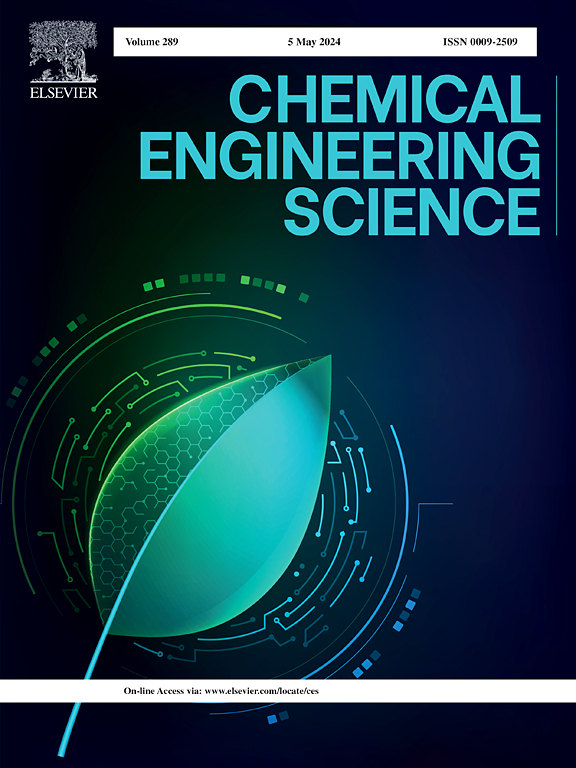Molecular structure-derived stability mechanism for sustainable amine-based CO2 capture
IF 4.1
2区 工程技术
Q2 ENGINEERING, CHEMICAL
引用次数: 0
Abstract
Solvent degradation is the most critical challenge of amine-based CO2 capture technology, which necessitates the development of chemically stable amine/amine blends to mitigate the absorbent degradation for industrial application. This study experimentally examined fourteen structurally different amines, namely the relatively stable cyclic, sterically hindered, and tertiary amines, to reveal the relationship between amine structure and chemical stability. The cyclic amines with a symmetrical ring structure greatly promote their oxidative stability, whilst the asymmetrical ring structure exhibited poor performance due to its relatively high C-N bond flexibility. The potential intramolecular interaction between the parent ring and the branched chain also reduced the stability of cyclic amines. While sterically hindered amines showed desirable oxidative stability thanks to the C-N bond protection by substitutions adjacent to amino group, their stability was very sensitive to the number of chain and the type of functional group surrounding to the amino group. Thermal stability of sterically hindered amines was also less satisfactory. It is observed that the amines with a rigid C-N bond, a longer branched chain connected to parent ring, and a preferable steric hinderance substantially promote the oxidative stability, with approximately 20 times less degradation compared to the benchmark MEA. Quantum calculation of bond dissociation energies (BDEs) of hydrogen-containing bonds were performed to reveal the atom position of radical formation that initiates the amine degradation. The potential degradation pathways were further predicted based on the positions of radical formation and the calculation of reaction Gibbs energy for possible degradation reactions. The analysis of heat stable salts products and the nitrogen distribution in the degraded solutions confirmed the bond cleavage position induced by radical formation and the reaction pathways, which clarified the potential amine oxidation mechanism. This work is anticipated to provide the generic principles to evaluate and develop the chemically stable amine solvent towards long-term operation of the amine process.


基于分子结构的可持续胺基CO2捕集稳定性机制
溶剂降解是基于胺的CO2捕集技术最关键的挑战,这就需要开发化学稳定的胺/胺混合物来减轻工业应用中的吸收剂降解。本研究对相对稳定的环胺、位阻胺和叔胺等14种结构不同的胺进行了实验研究,揭示了胺的结构与化学稳定性之间的关系。具有对称环结构的环胺极大地提高了其氧化稳定性,而不对称环结构的环胺由于其较高的C-N键柔韧性而表现出较差的性能。母环和支链之间潜在的分子内相互作用也降低了环胺的稳定性。虽然由于C-N键在氨基附近的取代保护,立体阻碍胺具有良好的氧化稳定性,但其稳定性对氨基周围的链数和官能团类型非常敏感。位阻胺的热稳定性也不尽如人意。结果表明,具有刚性C-N键、与母环连接的支链较长、良好的位阻的胺类化合物显著提高了氧化稳定性,降解率约为基准MEA的20倍。对含氢键的键解离能(BDEs)进行了量子计算,揭示了引发胺降解的自由基形成的原子位置。根据自由基形成位置和反应吉布斯能的计算,进一步预测了可能的降解途径。热稳定盐产物的分析和降解溶液中氮的分布证实了自由基形成引起的键解理位置和反应途径,阐明了潜在的胺氧化机理。本研究为评价和开发化学稳定的胺溶剂提供了理论依据,为胺法的长期运行提供了理论依据。
本文章由计算机程序翻译,如有差异,请以英文原文为准。
求助全文
约1分钟内获得全文
求助全文
来源期刊

Chemical Engineering Science
工程技术-工程:化工
CiteScore
7.50
自引率
8.50%
发文量
1025
审稿时长
50 days
期刊介绍:
Chemical engineering enables the transformation of natural resources and energy into useful products for society. It draws on and applies natural sciences, mathematics and economics, and has developed fundamental engineering science that underpins the discipline.
Chemical Engineering Science (CES) has been publishing papers on the fundamentals of chemical engineering since 1951. CES is the platform where the most significant advances in the discipline have ever since been published. Chemical Engineering Science has accompanied and sustained chemical engineering through its development into the vibrant and broad scientific discipline it is today.
 求助内容:
求助内容: 应助结果提醒方式:
应助结果提醒方式:


